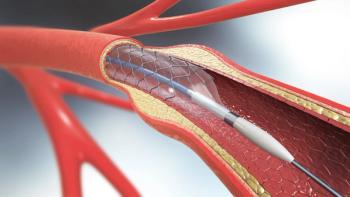
Study Evaluates Impact of Pharmacy Liaison-Patient Navigators on ACO Hospital/ED Admission Rates
Enhanced care involves a pharmacy technician serving as a patient navigator who screens for health-related social needs quarterly and helps to connect patients with community resources.
In low-resource communities served by Medicaid accountable care organizations (ACOs), patients struggle with many health-related social needs, such as food insecurity, lack of transportation to medical appointments, and housing insecurity. Patients with unmet health-related social needs are at high risk for preventable health care utilization, as well as high levels of medical expenses.
A recent nonrandomized controlled
The study took place from May 1, 2019, through March 4, 2021, with 12-month follow up within a pharmacy program included in a general internal medicine practice affiliated with a safety-net hospital in Boston, Massachusetts. Qualifications required that patients be aged 18 to 64 years, within the third to tenth percentile on an internal risk score (defined as inpatient and ED utilization over the past 12 months combined with indices of medical and social risk) among Medicaid ACO membership at the time of program enrollment and attend a visit with a primary care clinician.
Of the 770 eligible patients, 577 were approached, 127 declined, and 86 could not be contacted. The mean age of all participants was 50.1 (10.1) years.
Two hundred sixteen participants were women (59.3%) and 148 were men (40.7%). Two hundred ninety-six participants (81.3%) were members of a racial or ethnic minority group (35 Hispanic [9.6%], 214 non-Hispanic Black [58.8%], and 47 other [Asian, American Indian or Alaska Native, Native Hawaiian or other Pacific Islander, other, or declined or not available; 12.9%]).
Study authors defined the “usual care group” as standard of care in the practice, with some patients being screened for health-related social needs during their primary care visit. The screening tool included 8 domains of health-related social needs: housing insecurity, food insecurity, trouble paying for medications, trouble paying for transportation to medical appointments, trouble paying for utilities, need for employment, need for education, and difficulty taking care of children or other family members.
At the end of the visit, a medical assistant asked patients whether they wanted to receive help connecting to resources. Those that said “yes” were given printed information in addition to being referred to a clinic-based patient navigator.
The usual care and enhanced care groups varied in reported housing insecurity (17 [9.3%] vs 23 [12.6%], respectively), received a hospital food pantry referral in the past 12 months (25 [13.7%] vs 45 [24.7%], respectively), had at least 1 visit to the hospital food pantry in the past 12 months (22 [12.1%] vs 36 [19.8%], respectively), and had a posttraumatic stress disorder diagnosis (39 [21.4%] vs 26 [14.3%], respectively).
In the enhanced pharmacy care group, 364 patients received the services provided in the “usual care group,” however, enhanced pharmacy liaisons had smaller caseloads (maximum of 91 patients), no other responsibilities, and received training to serve as patient navigators (deemed pharmacy liaison-patient navigators). This role allowed liaisons to connect patients with community and hospital resources to address health-related social needs.
The pharmacy liaison-patient navigators spent the first 30 to 45 days after patient enrollment helping patients overcome health-related social needs beyond those identified as barriers to medication adherence. The liaisons also provided patient education, assisted with scheduling appointments and reminders, and offered support to connect with internal and community resources to help patients mitigate health-related social needs.
Both groups saw a decrease in inpatient hospital admissions and ED visits over the study period. In the usual care group, 129 (70.9%) had at least 1 inpatient hospital admission or ED visit compared with 118 (64.8%) in the 12-month follow up period. In the enhanced pharmacy care group, the corresponding numbers were 136 (74.7%) and 110 (60.4%), respectively.
In analyses controlling for language, housing insecurity, referral to food pantry, visit to food pantry, posttraumatic stress disorder, and baseline hospital admissions and ED visits (in the year prior to enrollment), the enhanced pharmacy care group was not associated with the odds of having any hospital admissions or ED visits relative to the usual pharmacy care group (adjusted odds ratio, 0.62 [95% CI, 0.23-1.62]; P = .32). Similarly, there was no difference in the rates of visits among those with any visit in the follow-up period in the adjusted model (aRR, 0.93 [95% CI, 0.71-1.22]; P = .62).
Based on these results, the authors said that “the findings…suggest that an intervention where Medicaid ACO members at a safety-net hospital received care from pharmacy liaison-patient navigators was not associated with a reduction in inpatient hospital admissions and ED visits relative to usual pharmacy care (liaison and clinic-based navigator).”
The investigators concluded by noting that future studies may focus on preventing high levels of health care utilization and in which settings such interventions should be made.
Reference
Buitron de la Vega, P, Ashe E, Xuan Z, et al. A pharmacy liaison-patient navigation intervention to reduce inpatient and emergency department utilization among primary care patients in a Medicaid accountable care organization. JAMA Netw Open. 2023;6(1):e2250004. doi:10.1001/jamanetworkopen.2022.50004
Newsletter
Stay informed on drug updates, treatment guidelines, and pharmacy practice trends—subscribe to Pharmacy Times for weekly clinical insights.






































































































































































































